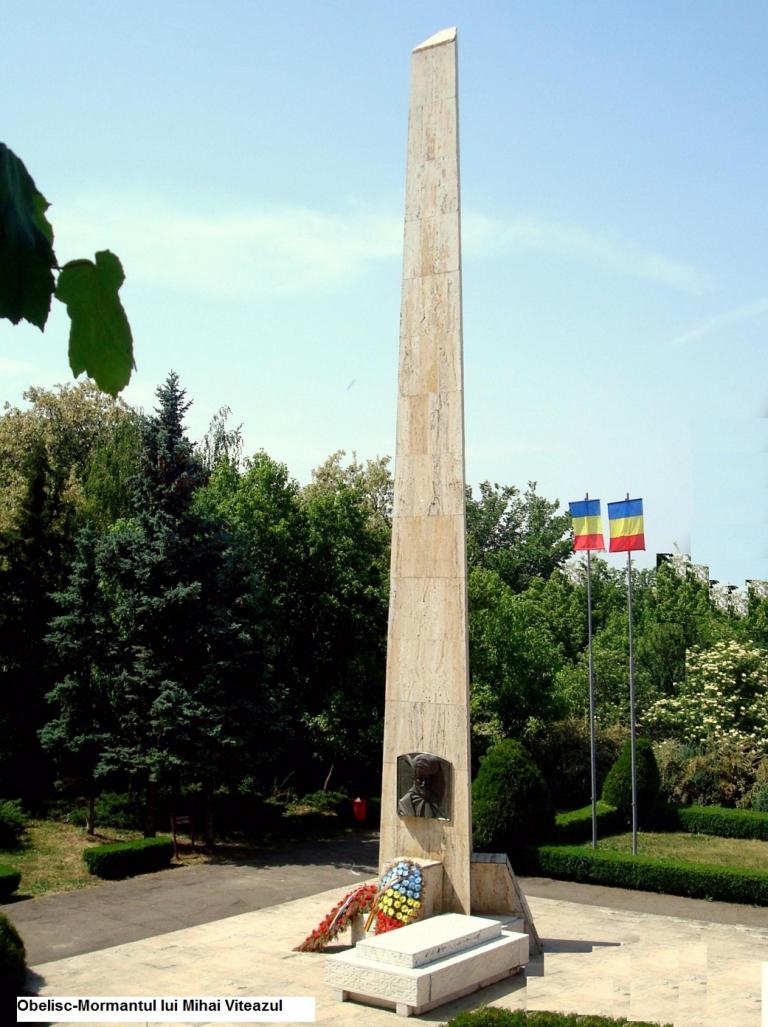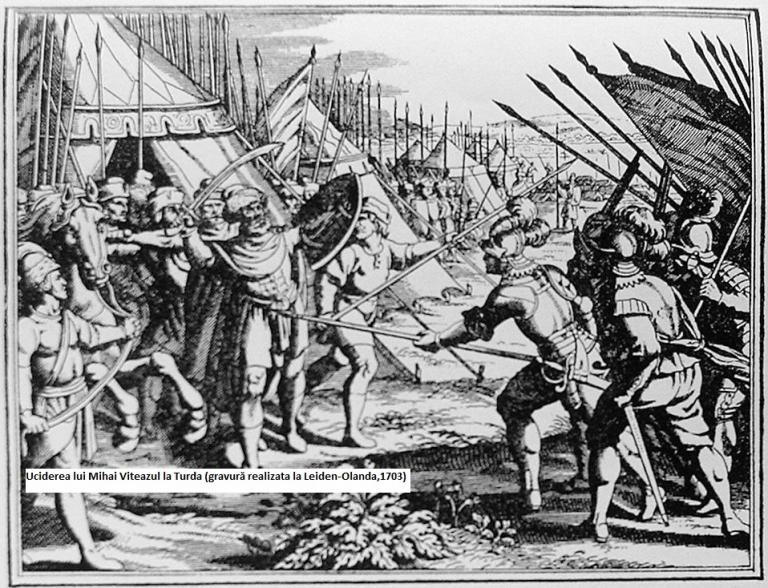Mormantul lui Mihai Viteazul-Turda



About Your Location:
The tomb of Michael the Brave at Turda
The tomb of Michael the Brave is located 3 km from the center of Turda, at Bogata, Cluj County. Here, the great ruler’s bodywas buried in an area called Campia Turzii (Turzii plain), while his head was taken to Dealu Monastery near Targoviste, the former capital of Wallachia.
On the site where he is buried today, a chapel in Byzantine style was built, by the Prince’s wife, Lady Stanca, chapel subsequently intentionally destroyed by Hungarian nationalist fanatics. The chapel was built as a trinity.
On the spot of the former chapel a crucifix was built, in 1928, with the recommendation and by the will of King Ferdinand I, who was here to visit along with Queen Mary, in 1919. Currently, the crucifix worked in popular style is on display at the Turda Museum of History, since 1977. It has engraved with the inscription: "Here the great prince Michael the Brave was killed on August 9, 1601".
The new monument (an obelisk) was inaugurated on May 5, 1977. Standing high at 1601 cm (a number that evokes the year 1601 in which the Michael the Brave died), the obelisk is the work of sculptor Marius Butunoiu. It is made of reinforced concrete, Ruşchiţa travertine plated on a rectangular base of vulcanic tuff. There are three sides, symbolizing the three principalities united under Michael the Brave in 1601. At the base of each side the emblems of the three principalities are carved, out of white marble from Simeria (just like the tomb’s board), done by Cluj artist Basil Russian Cluj Batin. The board is carved with the seal of Michael the Brave and the inscription "Here lies Michael the Brave (1593-1601) Lord of Wallachia, of Transylvania and all of Moldavia", followed bymentioning his heroic battles of Nikopol, Sadova, Călugăreni, Şelimbăr, Mirăslău, Gurăslău.
In the vicinity of the monument, the Church of Mihai Voda was built in 2005, acopy of the Mihai Voda Monastery church, raised by Michael the Bravein Bucharest.
Despre Locaţie:
Mormantul lui Mihai Viteazul Turda
Mormantul lui Mihai Viteazul este situat la 3 km de centrul municipiului Turda, pe strada Bogata, judetul Cluj. Aici a fost ingropat trupul marelui domnitor in zona numita Campia Turzii ( nu in orasul Campia Turzii) , capul lui fiind dus la Manastirea Dealu de langa Targoviste, fosta capitala a Tarii Romanesti.
Pe locul unde astazi este inmormantat Mihai Viteazul a fost construita o capela in stil bizantin, de catre sotia domnitorului, Doamna Stanca, capela distrusa ulterior intentionat de catre nationalistii fanatici maghiari. Capela a fost realizată sub forma unei troițe.
Pe locul fostei capele a fost ridicata in anul 1928 o troita, la recomandarea si dorinta Regelui Ferdinand I, care fusese aici in vizita cu Regina Maria, in anul 1919. In prezent, troita lucrata in stil popular , este expusa la Muzeul de Istorie din Turda, din anul 1977. . Ea are gravată inscripția: „Aici a fost răpus marele voievod Mihai Viteazul la 9 august 1601”.
Monumentul nou (obeliscul) a fost inaugurat pe data de 5 mai 1977. Înalt de 1601 cm (cifra evocă anul morții 1601), obeliscul este opera sculptorului Marius Butunoiu. Este confecționat din beton armat, placat cu travertin de Rușchița, pe un soclu dreptunghiular din tuf vulcanic. Are trei laturi, simbolizând cele trei principate unite sub Mihai Viteazul în anul 1601. La baza fiecărei laturi se află stemele celor trei principate, executate din marmură albă de Simeria (la fel ca și placa mormântului) de către artistul clujean Vasile Rus Batin. Placa are sculptat sigiliul lui Mihai Viteazul și inscripția „Aici odihnește Mihai Viteazul (1593-1601) Domn al Țării Românești, al Ardealului și a toată Țara Moldovei” apoi sunt trecute luptele sale eroice de la Nicopole, Sadova, Călugăreni, Șelimbăr, Mirăslău, Gurăslău.
În vecinătatea monumentului a fost construită în anul 2005 Biserica Mihai Vodă, copie a bisericii Mănăstirii Mihai Vodă ridicată la București de către Mihai Viteazul.
Ascunde numereleAfişează numereleHide numbersShow numbers

